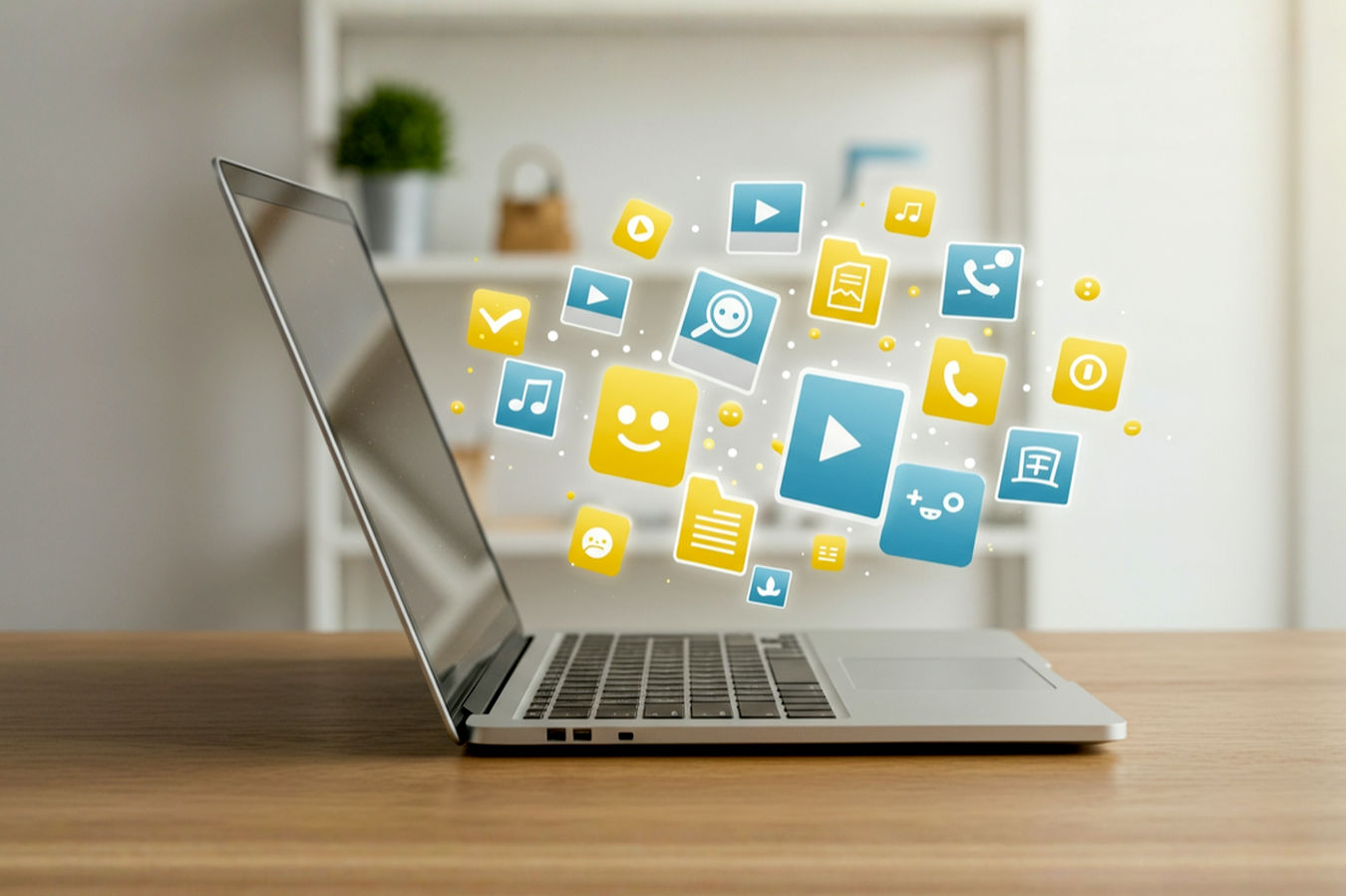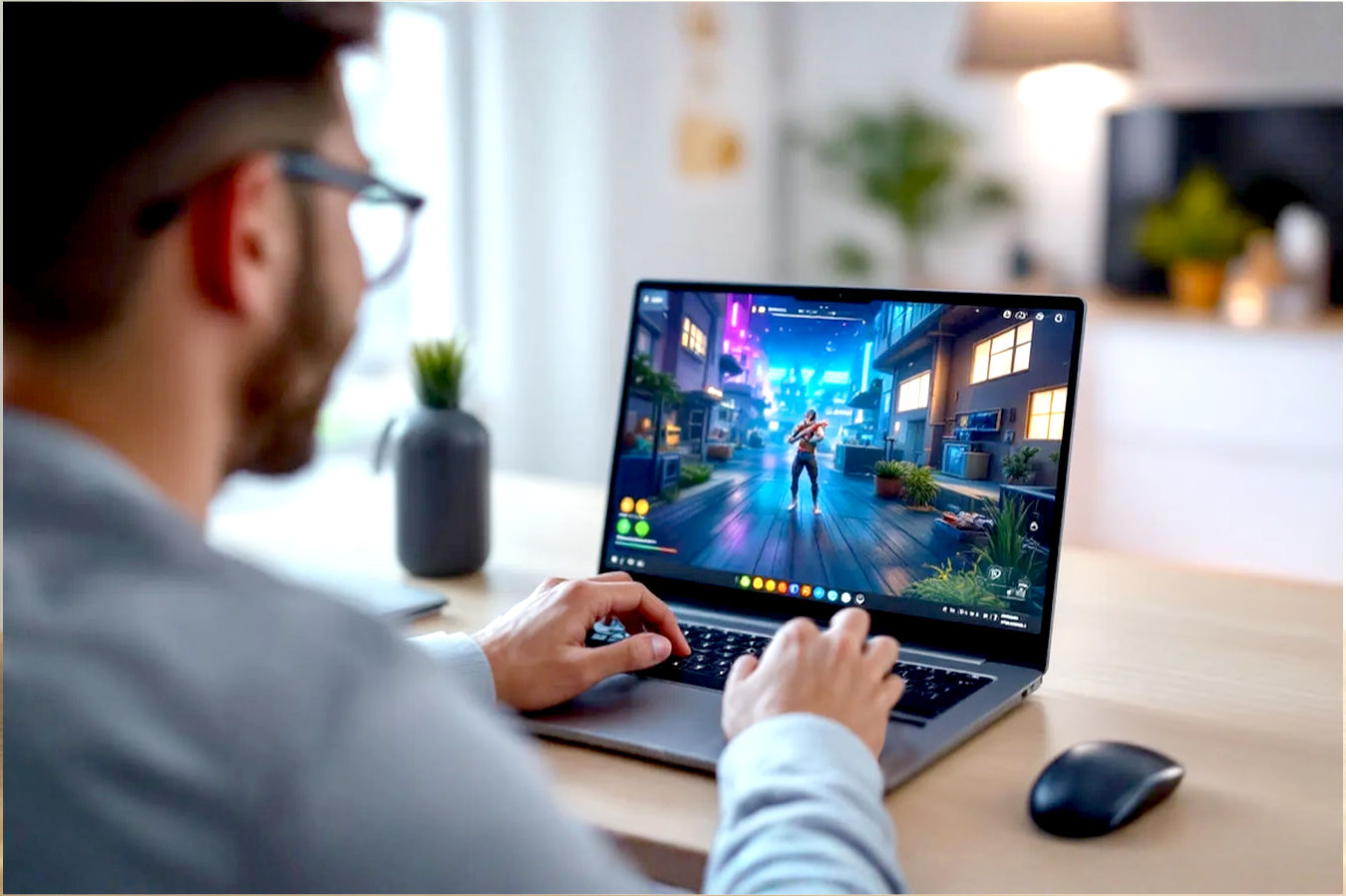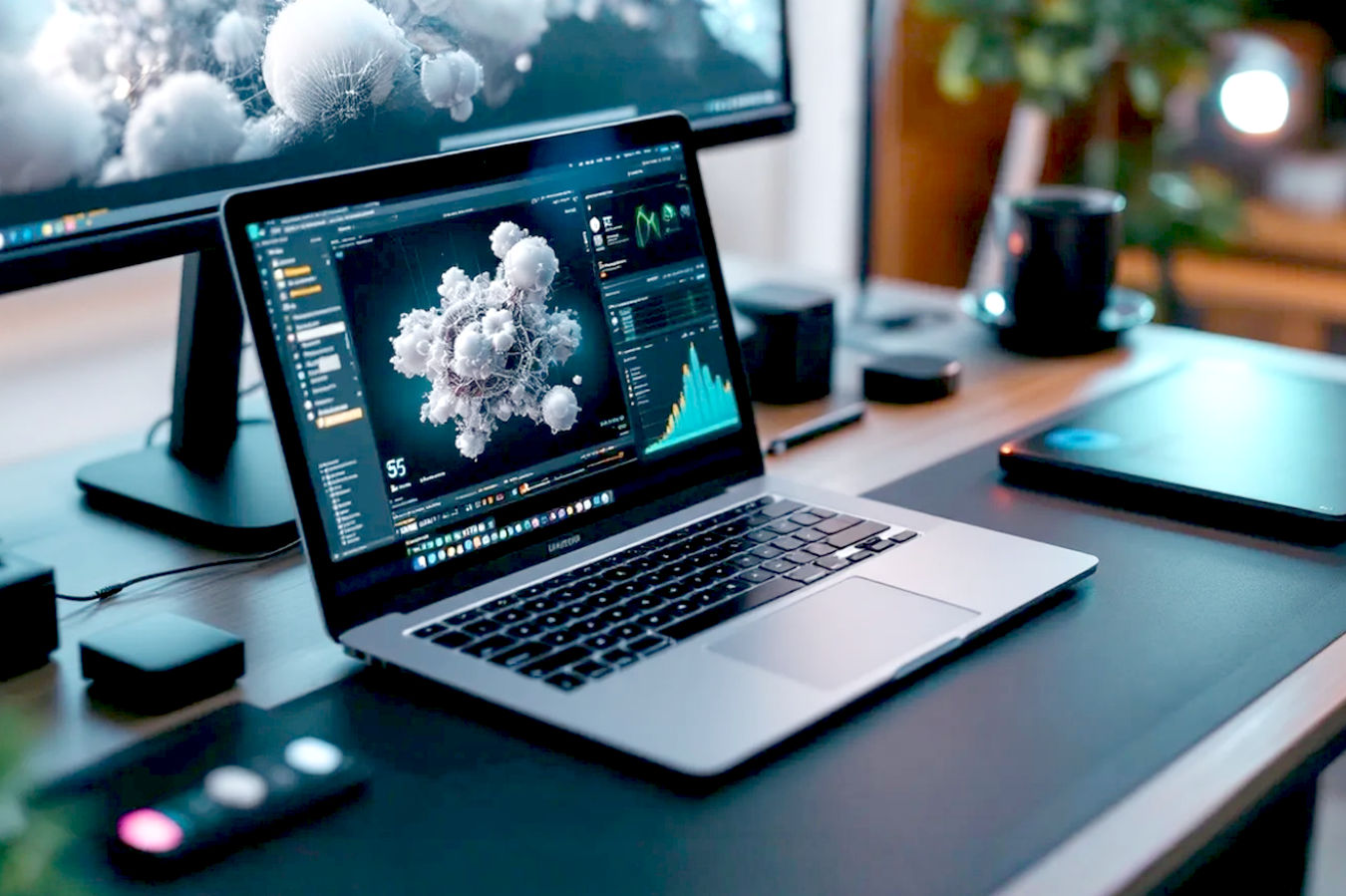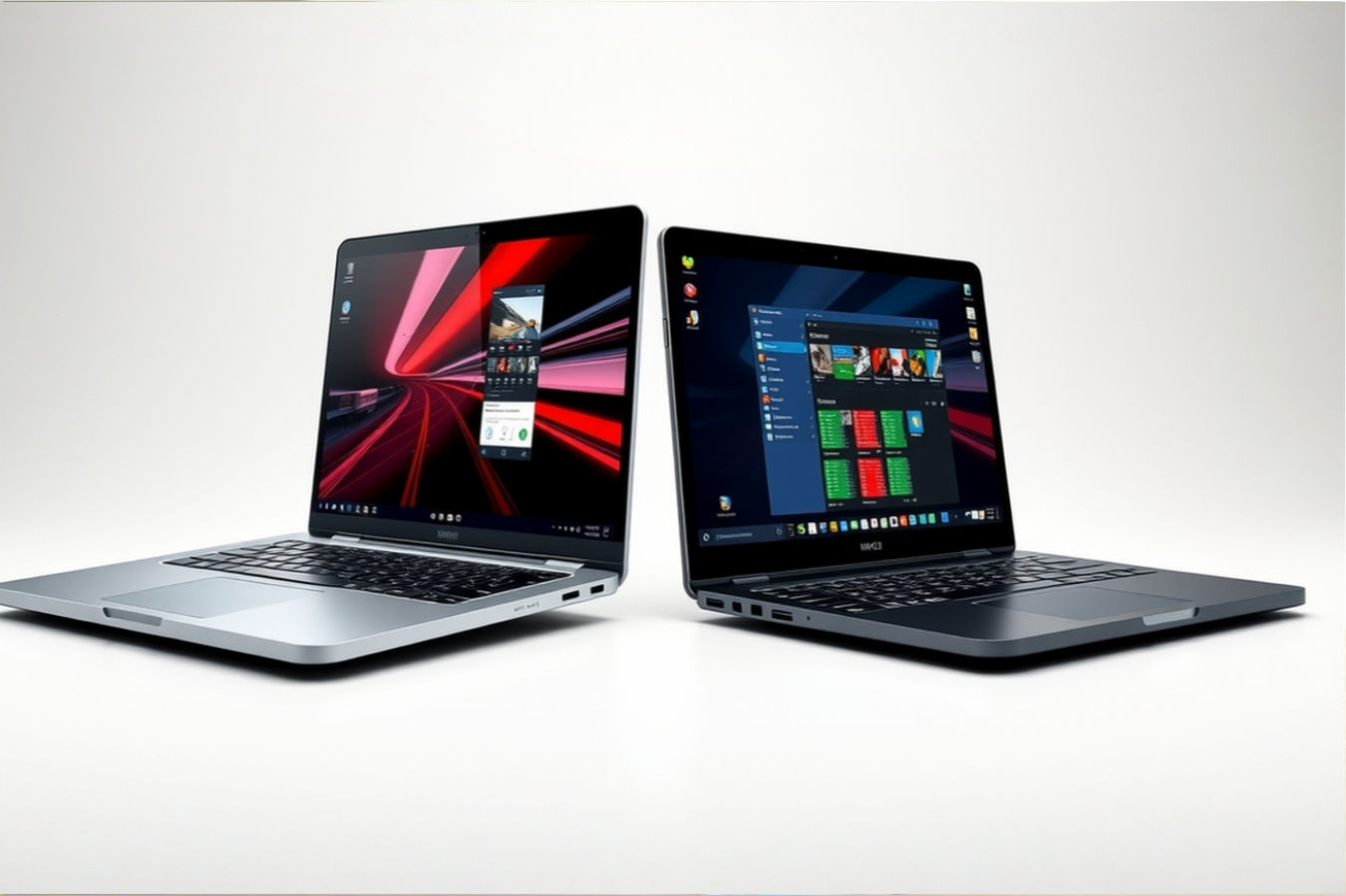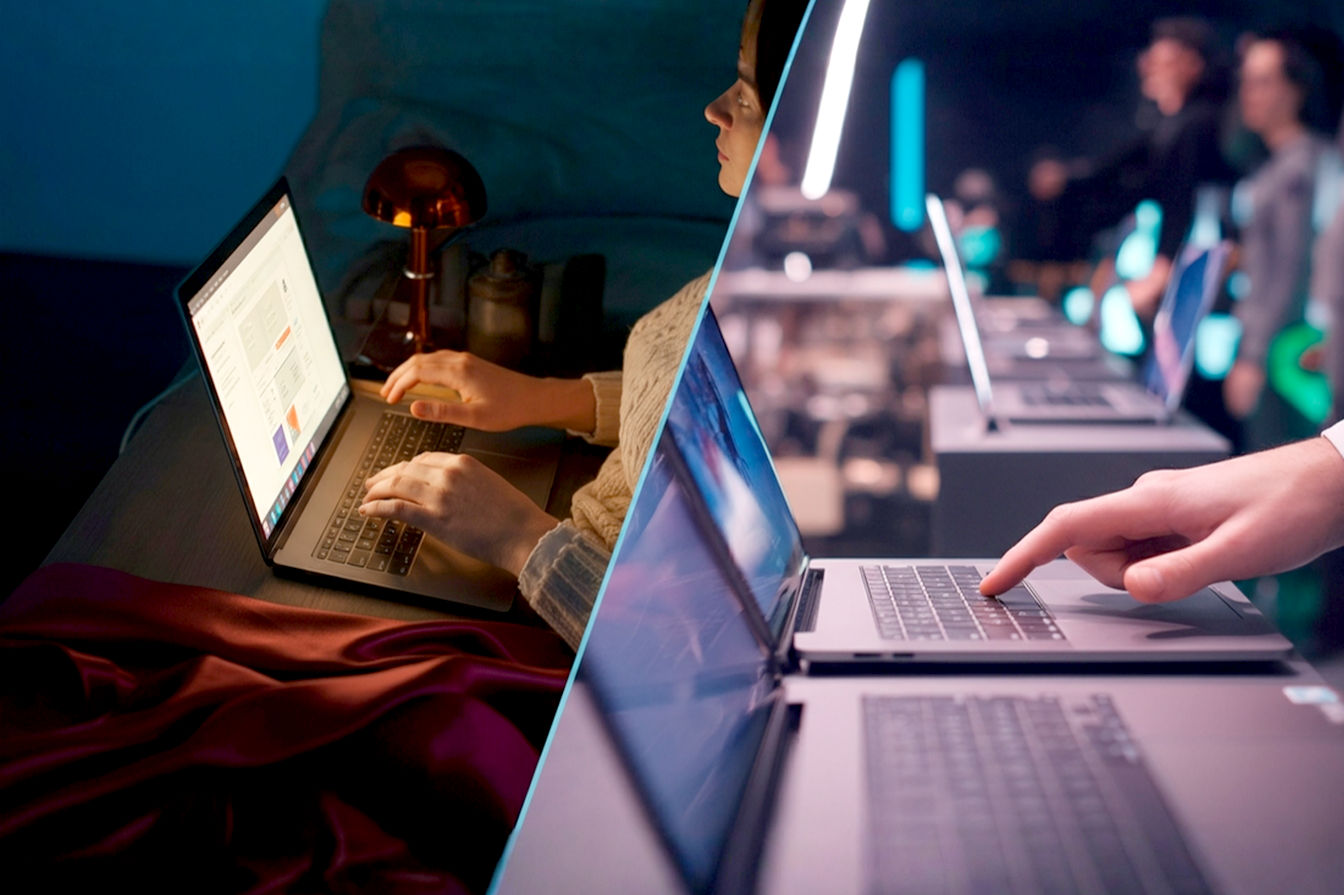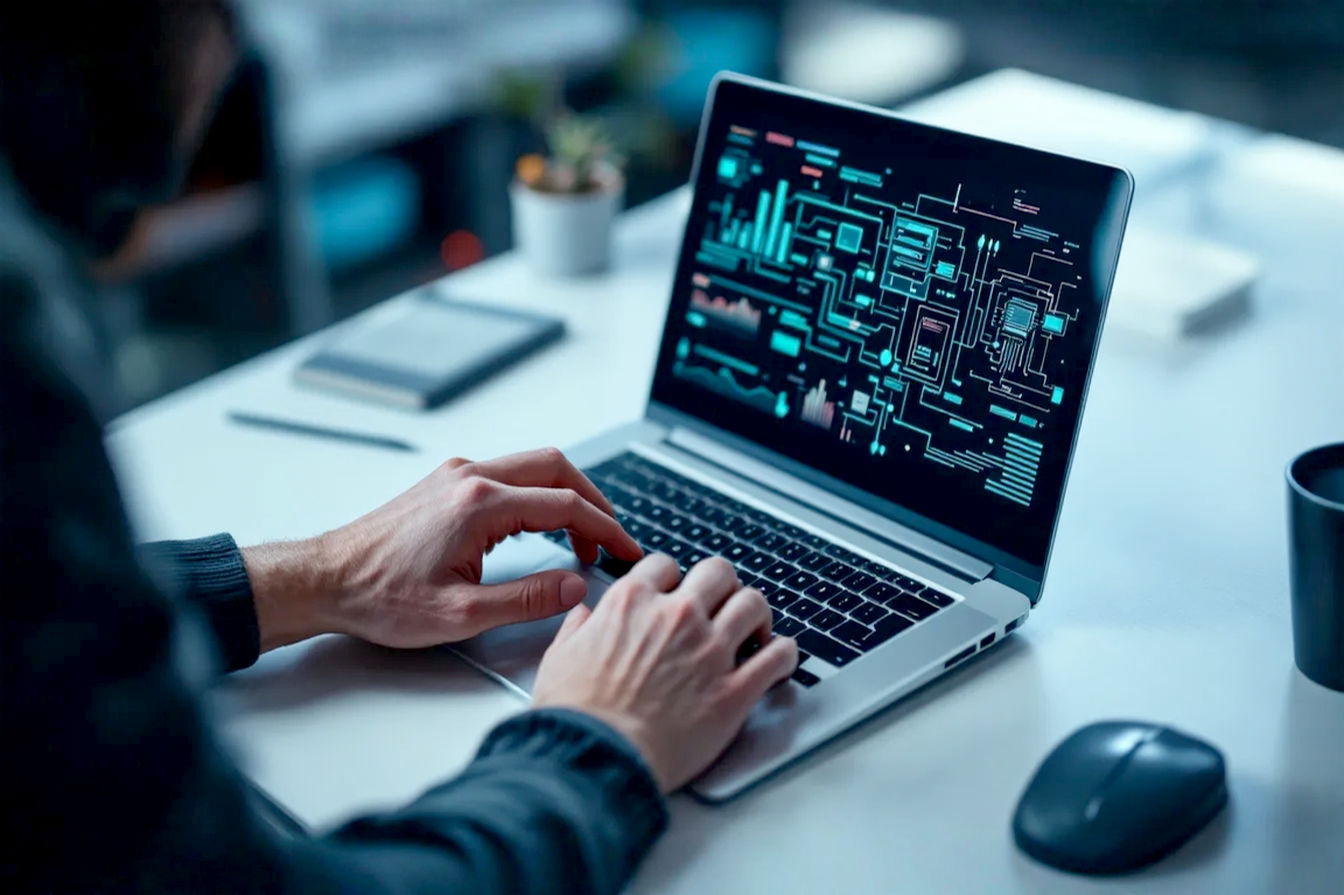This post may contain affiliate links. If you make a purchase through these links, we may earn a commission at no additional cost to you.
Choosing a new computer can feel like navigating a maze. For years, the laptop was the undisputed king of portable computing. But then came the tablet, sleek and touch-friendly, challenging the traditional clamshell design. Now, with powerful notebook tablets and versatile 2-in-1 devices blurring the lines, deciding between one of these modern slates and a classic laptop is tougher than ever. You’re likely asking yourself: can a tablet really replace my laptop? Which is better for getting work done, studying, or just everyday use? This guide will break down the key differences, advantages, and disadvantages of each, helping you figure out which device truly fits your life.
Understanding the Contenders
Before we dive into the head-to-head comparison, let’s make sure we’re clear on what we mean by a traditional laptop and a notebook tablet. While the lines are getting fuzzy, they still represent distinct approaches to personal computing.
What is a Traditional Laptop?
Think of the device you’ve probably used for years in school or work. A traditional laptop is a portable computer with a hinged screen and a physical keyboard built into the base. It opens and closes like a clam shell.
Laptops typically run full desktop operating systems like Windows, macOS, or Linux. This gives them access to a vast library of software designed for powerful computing tasks. They generally feature more robust processors, greater amounts of RAM (Random Access Memory), and larger storage capacities compared to most tablets. They also tend to have a wider array of physical ports for connecting accessories, external displays, and storage devices directly. Laptops are often seen as workhorse machines, built for productivity tasks that heavily involve typing, complex software, and multitasking.
What is a Notebook Tablet?
A notebook tablet, often simply called a tablet with a keyboard, is primarily a touchscreen device. While many can connect to or include a physical keyboard (either detachable or part of a folding design), their core interaction method is touch and often a stylus or digital pen.
These devices typically run mobile operating systems such as Apple’s iPadOS or Google’s Android. These operating systems are designed with touch in mind and rely heavily on apps downloaded from an app store. While app ecosystems have grown incredibly sophisticated, they don’t always offer the full functionality or compatibility of traditional desktop software. Notebook tablets are prized for their portability, light weight, and versatility, making them excellent for consuming media, browsing, note-taking, and creative tasks like drawing.
The Hybrid Zone: 2-in-1 Devices
Complicating the picture are 2-in-1 devices. These gadgets try to offer the best of both worlds. They can function as a traditional laptop with a keyboard and trackpad, but also transform into a tablet. There are two main types:
- Convertibles: These have a screen that folds all the way back (360 degrees) to become a tablet. The keyboard is usually attached but disabled in tablet mode.
- Detachables: These are essentially tablets with a keyboard cover or dock that can be completely removed.
2-in-1s run the gamut of operating systems, from full Windows on devices like the Microsoft Surface Pro to specialized versions of mobile OS on some others. They aim to provide flexibility, letting you choose the form factor that best suits your current task.
Key Comparison Points: Notebook Tablet vs. Laptop
Now that we’ve defined our terms, let’s put these devices head-to-head across the most important factors. Understanding these differences will be crucial in deciding which type of machine is right for you.
Portability and Form Factor
One of the most immediate differences you’ll notice is how these devices feel in your hands and bag.
Tablet Advantage: Lighter, Thinner, Easy to Hold
Notebook tablets are generally designed for maximum portability. They are significantly lighter and thinner than most laptops. This makes them incredibly easy to carry around, hold for extended periods (like reading an e-book or watching a movie), and slip into smaller bags. If you’re constantly on the go, commuting, or moving between different locations throughout the day, the sheer portability of a tablet is a major plus. Their slim profile also means they take up less space on a desk or tray table.
Laptop Advantage: Stable for Lap Use, Integrated Keyboard
While heavier, laptops offer a stable, integrated design that’s ideal for working on your lap. The hinged screen and fixed keyboard create a balanced unit that sits comfortably and securely. This is a significant advantage if you frequently work outside of a traditional desk setting, such as on a couch, in a coffee shop, or during travel. The integrated keyboard is always available and doesn’t require separate attachment or propping up.
2-in-1 Flexibility: Adaptability
2-in-1 devices attempt to capture the best of both worlds. In laptop mode, they offer the stability needed for typing. In tablet mode, they provide the lightweight, handheld experience. This adaptability is their core strength. However, some detachable keyboards can feel less stable than a traditional laptop’s built-in one, especially on an uneven surface. Convertible laptops can also be thicker and heavier than dedicated tablets when folded into tablet mode.
Performance and Processing Power
This is often where the most significant differences lie, especially when comparing traditional laptops to many mainstream tablets.
Laptop Advantage: More Powerful Processors for Demanding Tasks
Laptops are typically equipped with more powerful processors designed for complex computations and heavy multitasking. These include chips like the Intel Core i5, i7, and i9 series, or AMD’s Ryzen 5, 7, and 9 series. These are x86-based processors, which are the standard architecture for desktop computing and are built to handle intensive applications like professional video editing software (e.g., Adobe Premiere Pro, DaVinci Resolve), 3D rendering programs (e.g., Blender), complex data analysis tools, and running multiple demanding programs simultaneously without slowdown. Laptops also often have options for more RAM (16GB, 32GB, or even more) and dedicated graphics cards (GPUs) from NVIDIA or AMD, which are essential for gaming, video editing, and other graphically intensive tasks.
Tablet Limitation: Often Mobile Processors, Suitable for Everyday Tasks
Many notebook tablets, particularly those running Android or iPadOS, use ARM-based mobile processors (like Apple’s A-series or M-series chips, or Qualcomm Snapdragon). These processors are incredibly power-efficient, contributing to longer battery life and thinner designs. They are perfectly capable of handling everyday tasks such as web browsing, email, streaming video, social media, and running most mobile apps smoothly. However, historically, they haven’t matched the raw processing power of high-end laptop CPUs for demanding professional workloads.
Mention Exceptions and Technical Details
It’s crucial to mention that this gap is narrowing. Apple’s M-series chips (M1, M2, M3) found in newer iPad Pro models are a significant exception. These ARM-based processors offer performance that rivals or even exceeds many traditional laptop CPUs, allowing these tablets to handle tasks previously only possible on laptops. Similarly, Windows tablets often use the same x86 processors found in laptops, giving them comparable performance capabilities.
Technically, the difference often comes down to the processor architecture (x86 vs. ARM) and thermal design. x86 processors in laptops can consume more power but can also sustain higher performance for longer periods due to more robust cooling systems. ARM processors are optimized for efficiency and burst performance but can sometimes throttle (reduce speed) under sustained heavy loads to manage heat and power consumption. The amount and speed of RAM also play a big role; laptops typically offer more RAM, which is crucial for multitasking and working with large files.
Operating Systems and Software
The operating system dictates what software you can run, which is a fundamental difference between traditional laptops and many notebook tablets.
Laptop Advantage: Full Desktop OS, Wide Software Compatibility
Laptops running Windows, macOS, or Linux provide access to the full versions of desktop software. This means you can install and run virtually any program designed for that operating system, including powerful professional suites (Adobe Creative Cloud, Microsoft 365 desktop versions, specialized engineering software), development environments, and legacy applications that might not have a web or mobile equivalent. This wide compatibility is a major reason why laptops remain essential tools for many professionals and students who rely on specific, resource-intensive software.
Tablet Limitation: Mobile OS, App-Based Ecosystem
Tablets running iPadOS or Android operate within a primarily app-based ecosystem. You download software from an app store. While there are incredibly powerful and sophisticated apps available for almost any task (including photo/video editing, office productivity, and even coding), they are often designed differently than their desktop counterparts. They might have simplified interfaces, fewer features, or handle file management differently. Compatibility can also be an issue; some specialized or older desktop programs simply don’t have a tablet equivalent.
Mention Windows Tablets Running Full Windows
Again, Windows tablets running a full version of Windows 10 or 11 are an exception. These devices offer the tablet form factor and touch capabilities while providing access to the complete Windows software library. This makes them a popular choice for users who need the flexibility of a tablet but cannot compromise on software compatibility.
The software ecosystem difference is critical. If your workflow relies on specific desktop applications (like a particular CAD program, statistical analysis analysis software, or a legacy business application), a traditional laptop or a Windows tablet running a full desktop OS is likely necessary. If your needs can be met by mobile apps or web-based tools, a tablet might suffice.
Input Methods and User Interface
How you interact with the device significantly impacts usability for different tasks.
Tablet Advantage: Touchscreen, Stylus/Pen Input
Tablets shine with their direct touch interface. Swiping, tapping, and pinching feel intuitive for browsing, reading, and interacting with apps. The biggest advantage for many is stylus or digital pen support. Pens like the Apple Pencil or Microsoft Surface Pen allow for natural note-taking, sketching, drawing, and precise annotation directly on the screen. This is invaluable for students taking notes in class, artists creating digital art, or professionals marking up documents. The ability to simply pick up the device and start writing or drawing feels very natural, mimicking pen and paper.
Laptop Advantage: Physical Keyboard, Trackpad/Mouse
For tasks involving significant text input, a physical keyboard is generally superior. Laptops offer tactile feedback and key travel that allows for faster, more accurate typing over extended periods compared to on-screen virtual keyboards. While external keyboards can be connected to tablets, the integrated keyboard and trackpad on a laptop provide a seamless and stable typing experience, especially when working on a flat surface. The trackpad or the use of an external mouse also offers more precise cursor control than touch alone, which is beneficial for tasks requiring fine manipulation, like editing text documents, working in spreadsheets, or using complex design software.
2-in-1: Combines Both
2-in-1s aim to offer the best of both input worlds. You get the physical keyboard and trackpad in laptop mode and the touchscreen and pen support in tablet mode. However, the quality of the keyboard on detachable 2-in-1s can sometimes be a compromise compared to a dedicated laptop keyboard, occasionally feeling flimsy or having less key travel. Convertible 2-in-1s offer a standard laptop keyboard, but the device is heavier in tablet mode.
Battery Life
How long a device lasts on a single charge is a major consideration for portability.
Tablet Advantage: Often Designed for Longer Battery Life
Notebook tablets, particularly those with mobile ARM processors, are typically designed with power efficiency as a high priority. Their components generally consume less power than those in more powerful laptops. This often translates to longer battery life under typical usage conditions (web browsing, streaming, using apps) compared to many laptops. You might get a full day or even more of intermittent use from a tablet.
Laptop Variation: Varies Widely, Generally Less Than Tablets
Laptop battery life varies significantly depending on the model, screen size, processor, and usage. High-performance laptops with powerful CPUs and dedicated graphics cards will drain their batteries much faster than thin-and-light ultrabooks designed for efficiency. While some modern laptops boast impressive battery life, many will require charging sooner than a comparable tablet, especially when performing demanding tasks. The larger, brighter screens and more powerful components simply draw more power.
Storage and Expandability
Where you keep your files and how easily you can add more space or connect peripherals differs between device types.
Laptop Advantage: Larger Internal Storage, Easier to Upgrade, More Ports
Laptops typically offer more generous internal storage options, commonly starting at 256GB or 512GB SSDs, with options for 1TB or more. Many laptops also allow users to upgrade the storage later by replacing the internal drive. Furthermore, laptops are equipped with a wider variety and number of physical ports, including multiple USB-A ports (the standard rectangular ones), HDMI for external monitors, SD card readers, and sometimes Ethernet ports for wired internet. This makes connecting external hard drives, USB sticks, monitors, projectors, and other peripherals straightforward without needing adapters.
Tablet Limitation: Fixed Internal Storage, Reliance on Cloud/External Drives, Fewer Ports
Most notebook tablets come with fixed internal storage options that cannot be upgraded later. While options go up to 1TB or more on high-end models, lower-cost tablets often start with limited storage (e.g., 64GB or 128GB), which can fill up quickly with apps, photos, and videos. Tablets often rely more heavily on cloud storage services (like iCloud, Google Drive, Dropbox) for managing files. Physical connectivity is usually limited, often featuring only one or two USB-C ports. Connecting multiple peripherals simultaneously typically requires a hub or adapter, which adds cost and complexity. SD card readers are rare on tablets.
Cost and Value
The price tag is always a major factor in any purchase decision.
Tablet Range: Can Be Cheaper, High-End Rivals Laptop Prices
At the entry level, simple consumption-focused tablets are often significantly cheaper than the most affordable laptops. However, when you look at notebook tablets designed for productivity, the price can quickly escalate. High-end tablets like the iPad Pro or Microsoft Surface Pro, especially when bundled with their essential accessories like a keyboard cover and stylus, can cost as much as, or even more than, a capable traditional laptop. The cost of these accessories is often separate from the base tablet price, which is an important factor in the total cost of ownership.
Laptop Range: Wide Price Range, Often More Power/Storage Per Dollar
Laptops have a vast price range, from budget-friendly models suitable for basic tasks to high-end workstations costing thousands. While the initial entry point for a capable laptop might be higher than a basic tablet, laptops often offer more processing power, RAM, and internal storage for your money, particularly in the mid-range and higher tiers. You’re often paying for the integrated keyboard, trackpad, and more robust internal components.
Considering the total cost, including necessary accessories (like a keyboard for a tablet you plan to use for typing), is crucial for an accurate comparison.
Connectivity (Wi-Fi, Cellular, Ports)
Staying connected and hooking up external devices is part of the computing experience.
Both Offer Wi-Fi
Both notebook tablets and laptops universally offer Wi-Fi connectivity for accessing the internet wirelessly.
Tablet Advantage: More Likely to Offer Optional Cellular Connectivity
One area where tablets often have an edge is optional cellular connectivity (LTE or 5G). Many tablet models are available in versions that accept a SIM card, allowing you to connect to the internet via a mobile network without needing a Wi-Fi hotspot. This is incredibly convenient for staying connected while traveling or in areas without Wi-Fi. While some high-end laptops offer cellular options, it’s much less common across the board than with tablets.
Laptop Advantage: More Variety and Number of Ports
As mentioned earlier, laptops generally offer a greater variety and number of physical ports. This includes the older, but still widely used, USB-A ports, dedicated HDMI or DisplayPort outputs for connecting external monitors directly, and often an Ethernet port for a stable wired network connection. This reduces the need for external adapters or docks, making it easier to connect multiple peripherals simultaneously.
Discussing reliance on adapters for tablets is important here. With often just one or two USB-C ports, connecting a power cable, an external display, and a USB drive at the same time requires a multi-port hub, adding bulk and cost.
Camera and Audio
While not always the primary focus for productivity, cameras and audio quality matter for video calls and content creation.
Tablet Advantage: Better Cameras, Integrated Mics/Speakers
Notebook tablets often feature better cameras than laptops, both front-facing and rear-facing. The rear camera on a tablet is genuinely useful for taking photos, scanning documents, or even augmented reality applications, something rarely done with a laptop. The front-facing cameras on tablets are frequently higher resolution than standard laptop webcams, leading to better quality for video calls. Tablets are also often designed with better integrated microphones and speakers optimized for handheld use and video conferencing.
Laptop: Basic Webcam, Standard Audio
Laptops typically have a basic front-facing webcam suitable for video calls, but rarely a rear camera. The quality can vary widely but is often just sufficient for conferencing rather than high-quality video recording. Integrated microphones and speakers are standard but not usually a major selling point, often providing functional rather than high-fidelity audio.
Use Case Analysis: Who Needs What?
The “right” device depends entirely on what you plan to do with it. Let’s look at how notebook tablets and laptops stack up for different user groups and activities.
Best for Students
Students have diverse needs, from taking notes in lectures to writing long essays and running specific software for their courses.
Tablet Pros (Note-taking, Portability, Reading Textbooks)
For note-taking, especially if handwritten notes or diagrams are preferred, a notebook tablet with a stylus is often superior. The ability to write directly on lecture slides or digital textbooks is a major advantage. Their light weight and long battery life make them easy to carry around campus all day and use in various locations. Reading digital textbooks and articles is also often more comfortable on a tablet screen.
Laptop Pros (Essay Writing, Research, Specific Software for Courses)
For writing lengthy essays, research papers, or coding assignments, a traditional laptop with a comfortable physical keyboard is generally more efficient. Running multiple applications side-by-side (like a word processor, web browser for research, and a PDF reader) is often smoother on a laptop with more RAM and processing power. Many university courses require specific software that may only be available in a desktop version, making a laptop or a Windows tablet running full Windows essential.
2-in-1 as a Compromise
A 2-in-1 can be an excellent compromise for students, offering the note-taking and portability benefits of a tablet combined with the typing capabilities needed for essays and the ability (on Windows models) to run desktop software.
Best for Professionals
Professional needs vary greatly by industry, from sales presentations to complex data analysis or creative design.
Tablet Pros (Presentations, Quick Notes, Field Work, Travel)
For professionals who give presentations frequently, a tablet can be a fantastic tool for displaying slides and interacting with content via touch. Taking quick notes during meetings or on the go is easy with a stylus. For field workers (e.g., inspectors, sales reps), the portability, long battery life, and ability to easily capture data via touch or camera make tablets very practical. Frequent travelers also benefit from the lightweight design and optional cellular connectivity.
Laptop Pros (Heavy Data Analysis, Coding, Graphic Design, Multitasking, Office Suite Heavy Use)
Professionals who spend their day working with large datasets, writing code, performing complex graphic design or video editing, or heavily multitasking with multiple applications will almost certainly require the power and versatility of a traditional laptop or a high-end Windows tablet. The ability to run full desktop versions of software like Microsoft Excel (with complex macros), development environments (like Visual Studio), or professional design tools is paramount. The stable form factor and precise input of a laptop are also better suited for long hours of focused work.
Consider Specific Industries
Professionals in creative fields like graphic design or architecture might lean towards devices with powerful processors and dedicated graphics, often found in laptops or high-end mobile workstations. Sales professionals might value the portability and presentation capabilities of a tablet or 2-in-1. IT professionals might need the command-line access and software compatibility of a full laptop OS.
Best for Creative Work
Creative tasks span from digital drawing and painting to video editing and music production.
Tablet Pros (Drawing, Sketching, Digital Painting with Pen)
For visual artists who draw, sketch, or paint digitally, a notebook tablet with excellent pen support is often the preferred tool. Drawing directly on the screen feels natural, and the pressure sensitivity and tilt support offered by modern styluses allow for nuanced line work and shading. Apps like Procreate (iPadOS) or Sketchbook (various platforms) are powerful and optimized for touch and pen input.
Laptop Pros (Video Editing, 3D Rendering, Complex Graphic Design Software, Music Production)
For more resource-intensive creative tasks like professional video editing, 3D modeling and rendering, complex graphic design using software like Adobe Photoshop or Illustrator (desktop versions), or music production using Digital Audio Workstations (DAWs), the processing power, RAM capacity, and storage options of a traditional laptop are usually necessary. These tasks benefit greatly from powerful CPUs, dedicated GPUs, and the ability to connect multiple high-resolution external displays.
Discuss Specialized Hardware
Some creative workflows also benefit from specialized hardware interfaces (like audio interfaces or drawing tablets with physical buttons) that connect more easily and reliably to laptops via a wider range of ports. High-resolution, color-accurate displays are also crucial for many creative professionals and are commonly found on higher-end laptops and tablets alike.
Best for General Use and Entertainment
For many people, a computer is primarily for browsing the web, checking email, streaming videos, social media, and casual gaming.
Tablet Pros (Reading, Browsing, Streaming Video, Casual Games, Portability Around the House)
Notebook tablets are excellent for content consumption. Their lightweight design makes them perfect for lounging on the couch, reading in bed, or browsing the web casually. The touchscreen is intuitive for navigating streaming apps like Netflix or YouTube. The app stores offer a vast library of casual games. Their portability means you can easily take them from room to room.
Laptop Pros (Gaming, Connecting to External Displays, Using Legacy Software/Games)
While tablets are great for casual mobile games, laptops, especially those with dedicated graphics cards, are the go-to for playing more demanding PC games. Laptops also connect easily to external displays, making them ideal for watching movies on a larger screen or setting up a multi-monitor home office. If you need to run older software or play classic games that aren’t available as modern apps, a laptop provides the necessary compatibility.
The Rise of 2-in-1s: A Closer Look
Given how they bridge the gap, it’s worth examining 2-in-1 devices more closely. Are they the perfect solution, or do they involve compromises?
Types of 2-in-1s (Convertible vs. Detachable)
As mentioned, convertibles have a screen that flips around, keeping the keyboard attached. Detachables are tablets where the keyboard is a separate accessory that can be removed.
Advantages (Flexibility, Combines Strengths)
The main advantage of a 2-in-1 is its versatility. You get the productivity of a laptop when you need to type or use a trackpad, and the convenience and portability of a tablet for touch-based tasks, reading, or presentations. This can reduce the need to own multiple devices. For users whose needs fluctuate between typing-heavy work and touch-focused activities, a 2-in-1 offers a single device solution.
Disadvantages (Often Compromises)
However, 2-in-1s often involve compromises compared to dedicated devices. Detachable keyboards might not be as sturdy or comfortable for long typing sessions as a good laptop keyboard. Convertible laptops can be heavier and thicker than dedicated tablets when used in tablet mode. Performance might be less than a similarly priced traditional laptop due to design constraints needed to accommodate the convertible/detachable form factor. They can also be more expensive than either a basic tablet or an entry-level laptop, as you’re paying for the engineering that allows for the dual functionality.
Making Your Decision: Key Questions to Ask Yourself
With all these factors in mind, how do you make the right choice for you? Ask yourself these critical questions:
- What is your primary use case? Are you writing novels, drawing comics, analyzing data, attending online classes, or just browsing the web? Identify the tasks you’ll spend the most time doing.
- How important is portability? Do you need the absolute lightest device for constant travel, or will it mostly sit on a desk or be carried occasionally?
- Do you need specific software that only runs on a desktop OS? Check the system requirements for any essential programs you use for work or study.
- How much processing power do you require? Are you running demanding applications like video editors or CAD software, or mostly using web browsers and office apps?
- Is pen input essential for your workflow? Do you need to handwrite notes, sketch, or mark up documents directly on the screen?
- What is your budget? Be realistic about how much you can spend, and remember to factor in the cost of accessories like keyboards and pens for tablets.
- Do you need lots of ports or storage? Do you frequently connect external drives, monitors, or other peripherals? How much space do you need for your files?
Answering these questions honestly will help clarify your priorities and point you towards the device type that best meets your needs.
Conclusion
The debate between notebook tablets and laptops isn’t about which device is inherently “better,” but which is better for you. Traditional laptops remain the champions of raw power, full software compatibility, and comfortable, sustained typing for demanding productivity tasks. Notebook tablets excel in portability, touch interaction, pen input, and media consumption, often with excellent battery life. 2-in-1 devices offer a compelling middle ground, attempting to combine the strengths of both, though sometimes with compromises.
Ultimately, the best device is the one that empowers you to do what you need to do, efficiently and comfortably. Evaluate your primary activities, consider where and how you’ll use the device most often, and weigh the importance of factors like performance, portability, input methods, and budget. By carefully considering your own priorities against the strengths and weaknesses of each type of device, you can confidently choose the machine that will be your ideal companion for work, study, creativity, or play.

